Pine trees grow all over the world, mostly in the Northern Hemisphere, with a few species thriving in the southern Hemisphere. They are a great addition to any yard or garden because they are long-lasting, easy to grow and that they’ll fill in with minimum care.
There are a variety of different types of pine trees and all of them have unique characteristics. This article will explain the different types of pine trees, their botanical names, size, idea growing condition and characteristics.
List of Pine Trees
- Slash Pine
- Bristlecone Pine
- Sand Pine
- Longleaf Pine
- Lodgepole Pine
- Loblolly Pine
- Ponderosa Pine
- Pond Pine
- Jeffery Pine
- Shortleaf Pine
- Knobcone Pine
- Virginia Pine
- Japanese Black Pine
- Western White Pine
- Coulter Pine
- Eastern White Pine
- Whitebark Pine
- Limber Pine
- Monterey Pine
- Sugar Pine
- Dwarf mugo Pine
- Scotch pine
- Pinon Pine
- Aleppo Pine
- Austrian Pine
- Canary Island Pine
- Foxtail Pine
- Italian Stone Pine
- Lacebark Pine
- Luchu Pine
- Red Pine
- Bhutan Pine
- Gray
- Bishop Pine
Characteristics of Pine Trees
- Pine trees are conifers that belong to genus Pinus in the family Pinaceae.
- Young pine trees are usually conical, with whorls of horizontal branches. Older trees may have round, flat or spreading crowns.
- Pines have some deep roots except in poorly-drained soil where all roots are shallow. The taproot is prominent in well-drained soil and can make them difficult to transplant from the wild.
- They produce long, narrow needles 2 to 10 inches long. Pine needles are usually of different color, from blue to dark-green and are generally clustered into groups of two, three or five needles. The needles remain on the tree for between 2 to 15 years.
- Woody cones are typically the main feature of pine trees. Both male and female cones can be present on a single tree. The cones range from 3 to 6 inches in size.
- In some species the cones open at maturity and the seeds are released, while in others the cones remain closed by rotting, fire or food seeking birds.
- Many pine varieties produce lateral branches in large whorls running up a straight trunk.
- All Pine trees are evergreen type of trees, which means they keep their needles throughout the year.
- The bark covering the pine tree trunk and branches is typically rough, furrowed and flakes off in large scales.
- Pine trees range from dwarf trees which grow to maturity size of at least 3.5 feet tall to large trees which reach up to 200 feet tall.
- Pines have two types of branches, long shoots and short shoots. Both long and short develop in the axils of the deciduous scale leaves.
- Most pine tree varieties are long-lived, they live between 100 and 180 years.
- Pine trees are resinous in nature. The resin in the tree protects the tree by forming a protective cap over wounds and helps in the healing process.
- Pine tree wood is coarse-grained and usually dark-colored, with pale, often thick sapwood.
- Pines prefer sandy, well-drained.
Description
Slash Pine

Scientific Name: Pinus elliotii
Native Area: Southeastern United States.
Other Names: Swamp pine, Yellow slash pine, Southern Florida pine
Size: Slash pine reaches between 40 and 80 feet in height with a trunk diameter of 1.5-2 feet.
Characteristics: Slash pine is named after the ‘’slashes’’-swampy ground overgrown with trees and bushes, that constitute its habitat. This pine is somehow pyramidal with an open, rounded canopy when young and becomes rounded or flattened at maturity.
Growing in wetter areas, it is ideal for river edges and lakes. It is native to the Southeastern United States and lives approximately 200 years.
Also Read: Different Types of Eucalyptus Trees
Bristlecone Pine
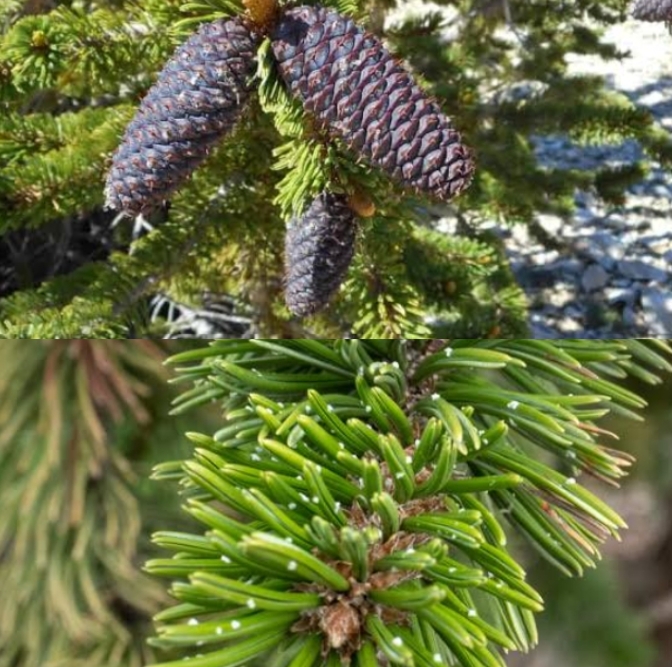
Scientific Name: Pinus longaeva, Pinus aristate
Other Names: Great Basin bristlecone and Rock mountain bristlecone
Size: Bristlecone pines are small to medium-sized trees averaging about 15 to 50 feet in height.
Characteristics: Bristlecone pine consists of two closely related species: Great basin and Rock Mountain. The bark of the great Basin bristlecone pine is typically orange-yellow to light brown whereas that of the Rocky Mountain pine is usually gray-brown. All the two species are long-lived and highly tolerant of difficult weather and poor soils.
Sand Pine

Scientific Name: Pinus clausa
Native Area: Southeastern United States
Other Common Names: Sand Pine, Florida Spruce Pine, Alabama Pine or Scrub Pine
Size: This is a small tree that grows from 20-45 feet in height.
Characteristics: Sand Pine is a shrub-sized tree with a bushy crown and dense branching. It is a relative of the common Florida slash pine and is not known for having straight trunks and often will take a bonsai-look by growing more limbs on one side of the tree.
The bark is thin and reddish to gray brown. In younger trees the bark is relatively smooth but as trees matures, they develop scaly patches. It is Native to Florida and one county in Alabama.
Longleaf Pine

Scientific Name: Pinus palustris
Native Area: Southeastern United States
Other Names: Yellow Pine or Long leaf yellow pine
Size: Depending with growing conditions, this tree can tower between 60 and 120 feet.
Characteristics: The longleaf Pine is characterized by upright branches forming an oval, open crown. The trunk has scaly, coarse, thick, orange-brown bark. The tree naturally prunes their lower branches and grows straight.
Longleaf pine takes 100 to 160 years to become full size and may live up to 400 years. Its extremely long needles are commonly used in the craft of coiled basket making.
Lodgepole Pine

Scientific Name: Pinus contorta
Other Name: Twisted Pine or Shore Pine
Size: The average mature size is between 50-70 feet in height.
Characteristics: Lodgepole pine is generally long, slender with a high, small crown covered with easy to remove shoots. The branches are elastic either overhanging or upright and are usually difficult to break.
The bark is thick, orange-brown to gray or black fissuring into flaky pattern. This is a highly adaptable tree that can grow in a variety of conditions from water-logged bogs to dry sandy soils. This pine tree can survive up to 250 years plus.
Loblolly Pine
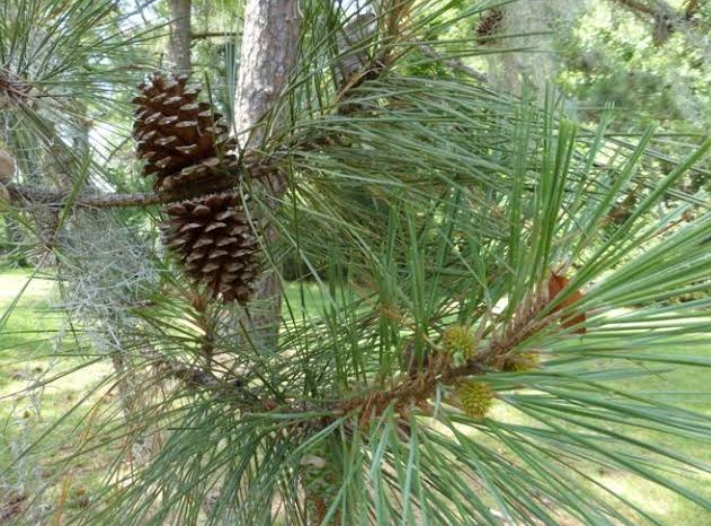
Scientific Name: Pinus taeda
Other Names: Old field pine, Rosemary pine or longstraw pine
Size: Loblolly pine typically grows between 40 and 95 feet tall with a relatively upright trunk.
Characteristics: Loblolly pine features a loosely pyramidal when young and eventually develops a spreading oval crown at maturity. This is the most popular ornamental tree in North America after the red maple.
The name loblolly comes from the fact that this pine tree is mostly found in lowlands and swampy areas. At maturity the bark thickens and forms irregular plates that reveal a dark-red color when scratched.
Ponderosa Pine

Scientific Name: Pinus ponderosa
Other Name: Blackjack pine, Filipinus pine
Size: When grown in cultivation Ponderosa pine will tower at between 40 and 70 feet.
Characteristics: This is the most common pine tree in dry areas in North America. Its bark is dark brown to nearly gray when young and brown to orange-yellow at maturity (approximately 60 years).
Ponderosa pine has a long, deep root system that enables it get to deeper moisture soil and anchor firmly in the soil. The tree can live as long as 250 years.
Also Read: Sycamore Trees
Pond Pine
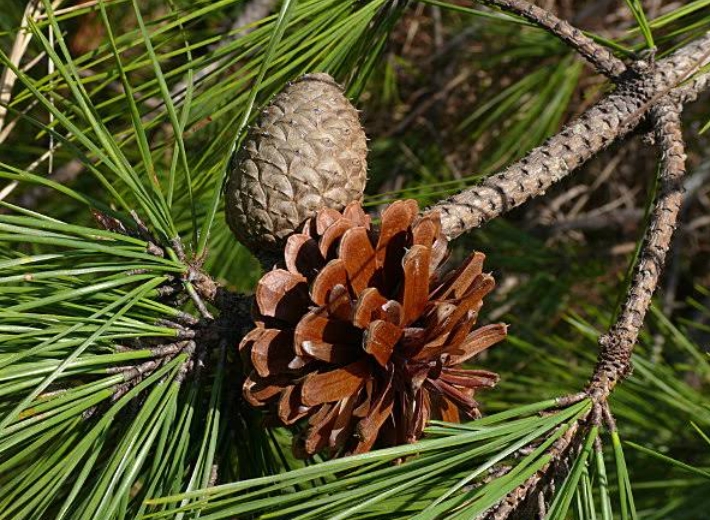
Scientific Name: Pinus serotina
Other Names: Marsh pine or Pocosin pine
Size: This pine species grows between 40 and 70 feet tall, rarely does it get 100 feet in height.
Characteristics: Pond pine generally grows on soils with a high-water table. The tree grows in a conical shape and often characterized slightly crooked branches that are somewhat rough with knots or bulges. The bark is red-brown in color, irregular furrowed and cross-checked into rectangular, flat, scaly plates.
Like loblolly pine, serotinous pond pine cones persist on the tree for long periods of time and only open after exposure to fire or high heat. The wood is resinous, heavy, often coarse-grained, orange-colored, with pale yellowish, wide sapwood.
Jeffrey Pine

Scientific Name: Pinus jeffreyi
Size: Grows up to 120 feet in areas with favorable conditions.
Characteristics: This pine tree that is similar in appearance to the ponderosa pine and is named in honor of botanists John Jeffrey. This medium-large tree features a thick trunk and strong branches with a small or sometimes spreading crown.
Young trees have a blackish-brown bark whereas mature trees have yellow to orange-red bark in broad plates with black crevices. The bark also has a distinctive vanilla or lemon-like scent. This tree has a lifespan of over 150 years and; is tolerant to drought, cold and heat.
Shortleaf Pine
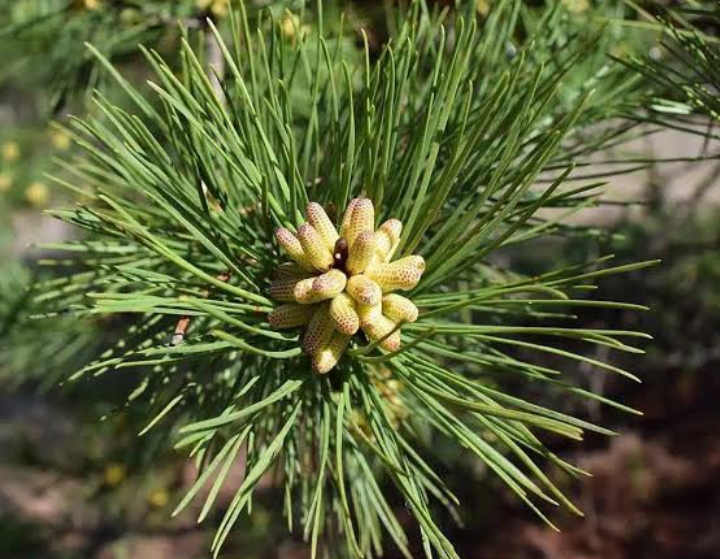
Scientific Name: Pinus echinate
Other Names: Arkansas soft pine or shortstraw
Size: Shortleaf pine is a medium to large tree reaching 60-110 feet in height.
Characteristics: This pine variety features spreading branches, straight trunk and a small pyramidal crown. Trunks of larger trees have broad, flat, reddish-brown to nearly black, scaly plates. Twigs supporting needles on young trees are greenish-purple and turn red-brown at maturity.
This pine often hybridizes naturally with loblolly pine and pitch pine tree where their ranges intersect. The shortleaf pine matures in about 45 years and in addition to being used for timber, the tree including its roots is also used for pulpwood.
Knobcone Pine
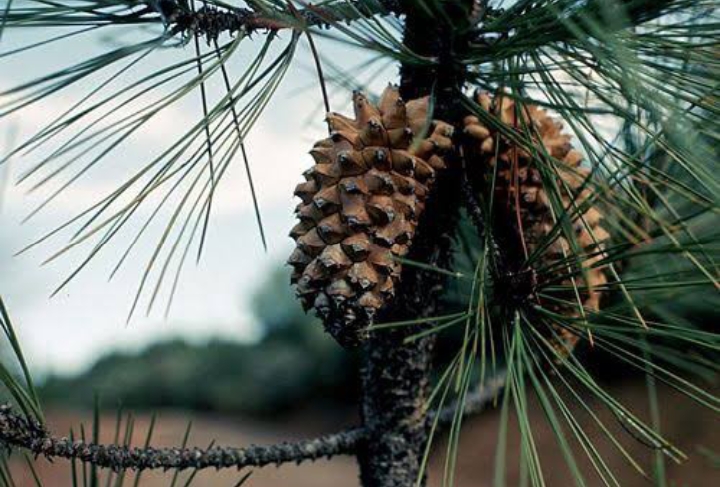
Scientific Name: Pinus attenuate
Size: Knobcone pine generally doesn’t grow tall. It reaches heights of between 15 and 25 feet.
Characteristics: Knobcone pine features ascending branches, straight trunk with a conically shaped crown. The bark on trunk is dark-brown, shallowly and narrowly fissured with irregular scaly plates.
The twigs are red-brown and often resinous. Its wood is knotty and not good for lumber. This variety of pine can live up to a century.
Also Read: Different Types of Maples
Virginia Pine
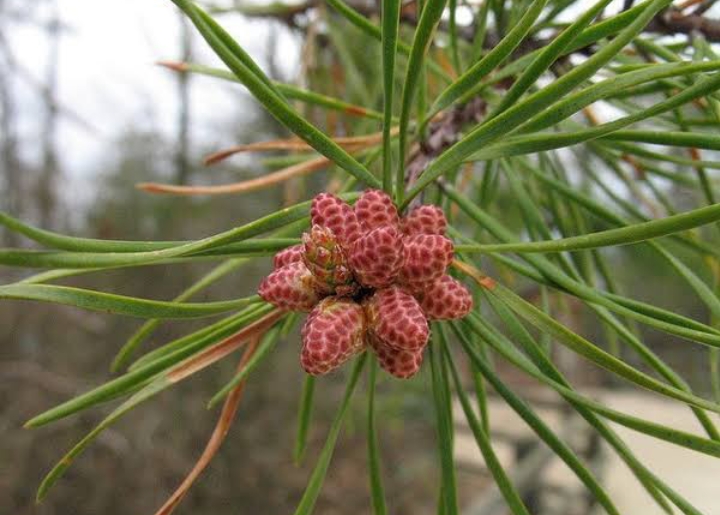
Scientific Name: Pinus virginiana
Other Names: Jersey Pine
Size: This is a medium-sized tree that grows between 15 and 40 feet.
Characteristics: Virginia pine grows rapidly in a pyramidal form but with time as matures, it loses the form and becomes rugged or scrubby, in other words it becomes flat-topped and horizontal with no prominent leader only featuring disproportionately long limbs.
Young Virginia pines have smooth, red and scaly bark which eventually becomes shaggy and grayish-brown at maturity. This pine has a lifespan of at least 80 years.
Japanese Black Pine

Scientific Name: Pinus thunbergii
Other Names: Japanese pine
Size: Depending on the growing condition, Japanese black pine reaches between 20 and 30 feet high at maturity.
Characteristics: Japanese black pine is shrubby and compact in nature, growing in an irregularly-shaped form. The branches grow in bushy decorative clumps from the trunk, curving gently in the same manner as the trunk.
The bark on the trunk and small branches of young trees is gray in color which eventually changes brown or black at maturity. Japanese black pine is one of the classic bonsai trees whose branches or trunk can be trained from a young age to offer picturesque elegance at maturity.
Western White Pine
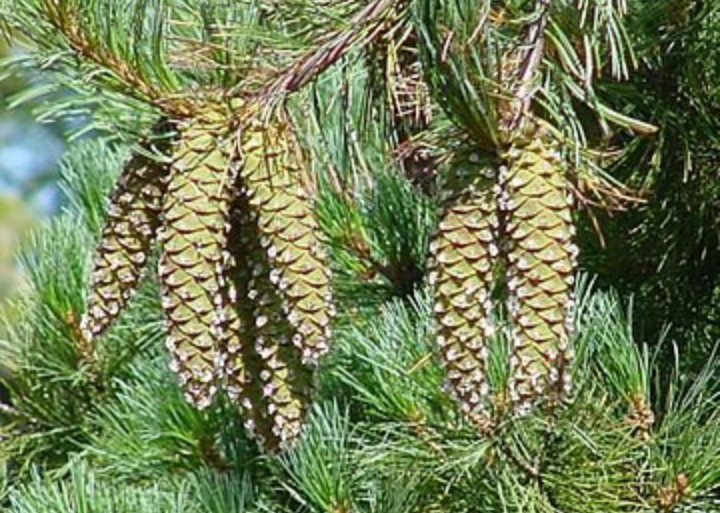
Scientific Name: Pinus monticola
Other Names: Silver pine or California mountain pine
Size: This is a medium to large sized pine growing between 40 and 90 feet tall.
Characteristics: Western white pine is usually common in closed groups of trees and has an irregular crown and short branches. When the tree is young, its bark is smooth, thin and greyish-green and turns darker almost black as the tree matures.
The bark is deeply fissured and appears to be cut into small, checkered units. This pine variety can be used as an ornamental garden specimen and can live between 150 and 250 years.
Coulter Pine

Scientific Name: Pinus coulteri
Other Names: Big cone pine
Size: The grows between 30 and 80 feet in height.
Characteristics: Coulter pine features large cones that may be over 12 inches and covered with long, incurving claws. The cones are the heaviest of any pine species, weighing up to 8 pounds.
The tree also has a straight trunk, spreading branches and a thin, broad crown. The bark is dark-brown to nearly black in color furrowed, with long scaly, rounded ridges. Coulter pine can reach over 100 years of age.
Eastern White Pine

Scientific Name: Pinus strobus
Other Names: Weymouth pine or North white pine
Size: The size of this tree may range between 40 and 85 feet tall, depending with the growing environment.
Characteristics: This fast-growing pine has a straight trunk with a crown of horizontal branches that makes the tree to assume a pyramidal shape. The bark is green with some lighter patches in young trees, eventually turning reddish brown with dark fissures at maturity.
Mature trees are often 150-200 years old and some can live over 250 years. This tree can add a stately, elegant look to the yard when cared for well.
Also Read: Different Types of Willow Trees
Whitebark pines
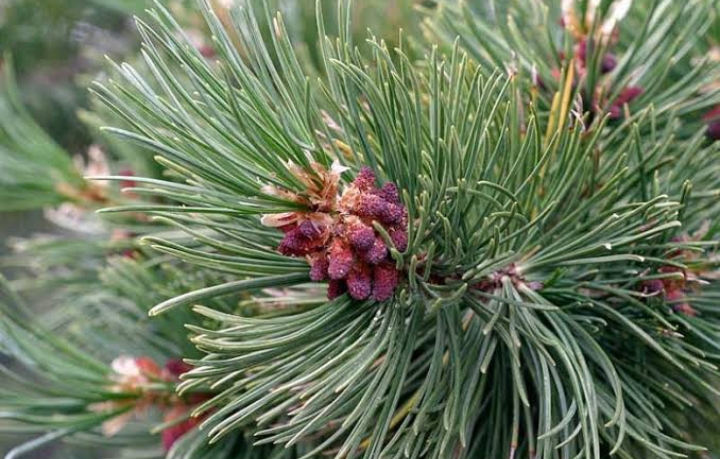
Scientific Name: Pinus albicaulis
Other Names: Creeping pine, Pitch pine
Size: The size of this tree ranges between 30 and 95 feet tall depending with cultural environment.
Characteristics: Whitebark pine varies in shape from a small tree with a rapidly spreading trunk and broad crown to a shrub with a wide-spreading crown and twisted, gnarled branches when exposed to strong winds. The bark of young trees is chalk-white whereas that of mature trees is brown, with narrow scaly plates.
Limber Pine

Scientific Name: Pinus flexilis
Other Names: Rocky Mountain White Pine
Size: Limber pine is a medium-sized tree averaging between 30 and 50 feet tall at maturity.
Characteristics: Limber pine is similar in appearance to a white pine when its young. It is named limber pine because of the flexible nature of the branches. Young branches can literally be tied into a knot.
The bark on twigs is smooth and light gray whereas the bark on trunk of mature trees may be dark brown and deeply fissured. Slow growing, long-lived species, Limber pines are quite common on rocky hills at higher elevation.
Monterey Pine
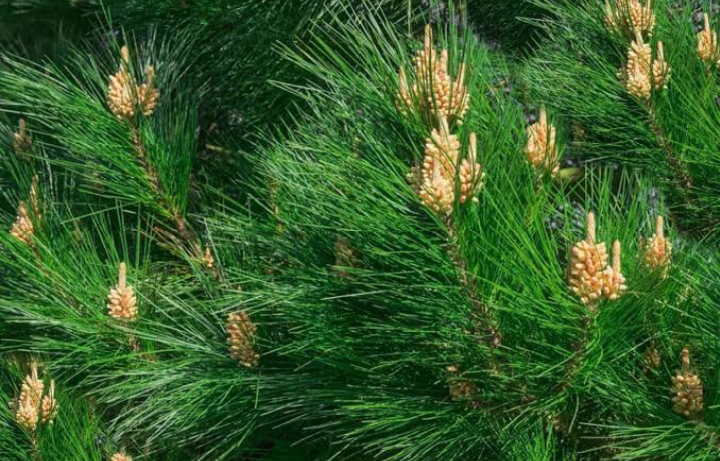
Scientific Name: Pinus radiata
Other Names: Radiata pine
Size: Monterey pine grows between 50 and 110 feet tall.
Characteristics: This is a rapid growing pine with upward ascending branches and a rounded or oval top. The bark on mature trees is dark grey to brown and deeply fissured.
In its natural state, Monterey pine is a rare and endangered tree and is twisted, knotty and full of sap or resin and not suitable for lumber. This tree is one of the few pines that will flourish in salt marshes, though it is neither frost nor heat tolerant.
Sugar Pine
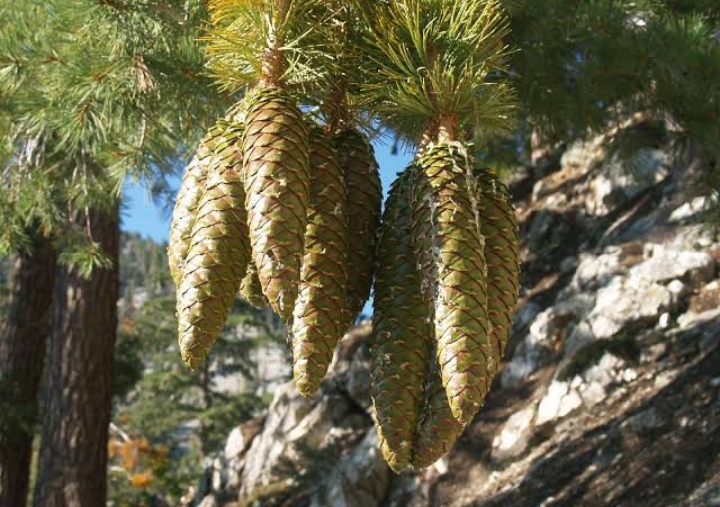
Scientific Name: Pinus lambertiana
Other Name: Sugar cone pine
Size: Sugar pine is the tallest and the largest tree in the Pinus genus, growing more than 170 feet depending with growing environment.
Characteristics: Sugar pine is easily recognizable by its long cones. The cones are the longest of any pine species, at least 12 inches in length. Its crown is pyramidal with horizontal or slightly drooping branches. The bark is gray to brown and divides into furrows between scaly plates on large trees.
The straight trunk of a mature sugar pine, which is free of branches for much of its height, can grow to 5 feet. The species name lambertiana was given by the Scottish botanist David Douglas, who named the tree in honor of the English botanist Aylmer Lambert.
Dwarf mugo pine

Scientific Name: Pinus Mugo
Other Names: Bog pine, dwarf mountain pine or swiss mountain pine
Size: Dwarf mugo pine grows between 2 and 4 feet and 2-4 feet wide.
Characteristics: Dwarf mugo is a small multi-stemmed pine with a more or less rounded form. It typically remains small in most landscapes. Its dark green needles grow stiff and upright.
It is popularly for rock gardens, mass plantings and in mixed groupings with broadleaf plants. This tree grows at a slow rate and when grown in favorable conditions can live for more than 40 years.
Scotch Pine
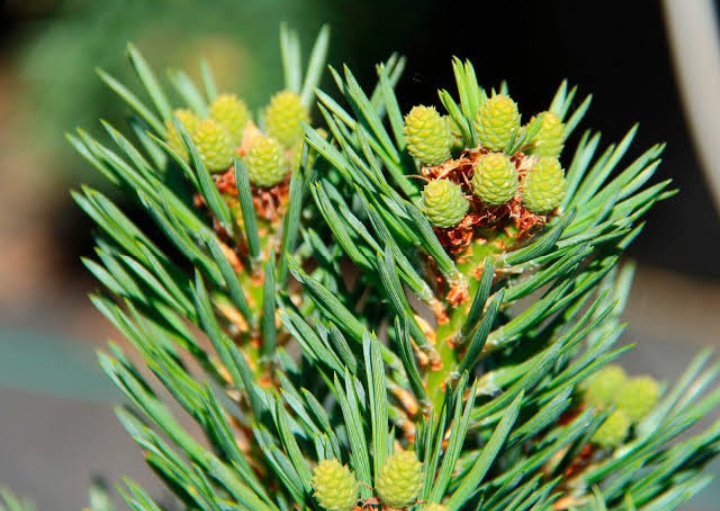
Scientific Name: Pinus sylvestris
Other Names: Baltic pine
Size: Scotch pine typically reaches between 45 and 60 feet in height.
Characteristics: A beautiful pine tree which is hardy and adaptable to nearly all climates. It has a broader pyramidal shaped and tends to look more gnarled with age. The bark has a scaly orange-brown color and becomes textured and warped as the tree matures.
It also has a lifespan of more than 300 years. This tree is often used as a Christmas tree because of its triangular form and ability to hold its needles for a long time after cutting.
Also Read: Bigleaf Maple Trees
Pinyon or Pinon Pines
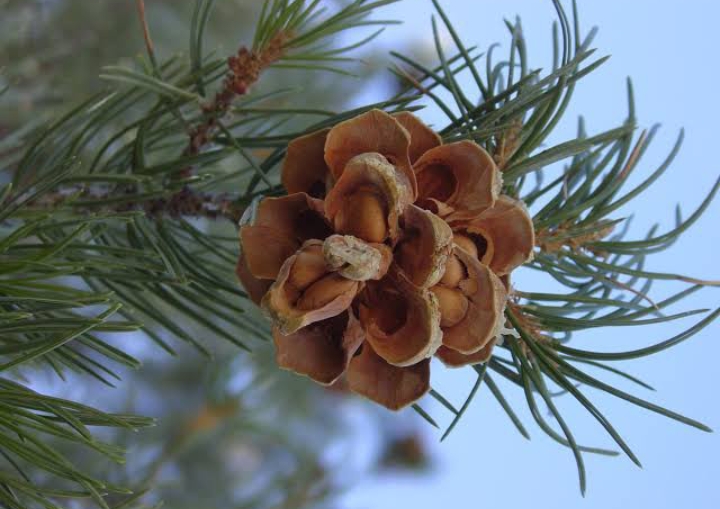
Scientific Name: Pinus edulis
Size: This is a small pine that generally grows below 30 feet in height.
Characteristics: This is a slow growing pine often taking years to reach a paltry 10 feet. It features a crooked trunk and red-brown bark with an open crown. It is also the only pine tree variety that bears edible nuts.
The Pinon pine is a long living pine, taking between 80 to 150 years to reach maturity and can live beyond 500 years.
Aleppo Pine
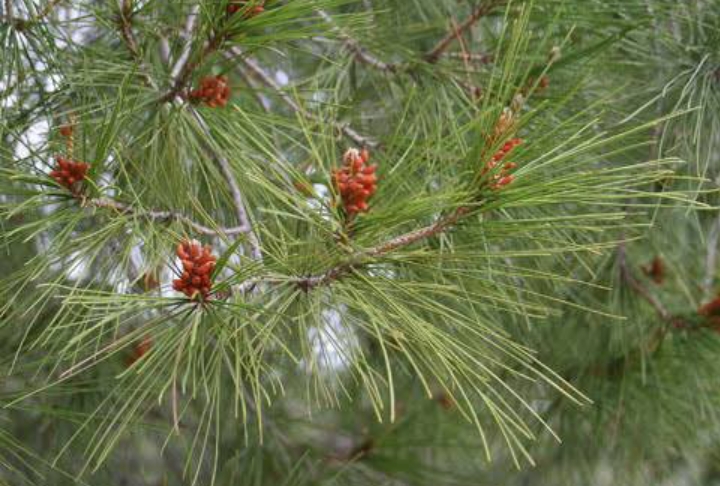
Scientific Name: Pinus halepensis
Other Names: Jerusalem pine
Size: Aleppo pine is a small to medium sized evergreen tree that grows approximately 50 and 90 feet tall.
Characteristics: This beautiful drought tolerant pine is native to the Mediterranean region where it has a wide distribution. The tree is as wide as it is tall and grows in a cone-shaped with an orange-red back that’s deeply fissured at the base of the trunk and flaky in the upper crown.
Austrian Pine

Scientific Name: Pinus nigra
Size: This pine typically grows between 35 and 80 feet tall.
Characteristics: This is a medium-sized tree with a straight trunk featuring a dome-shaped crown or narrow pyramidal shape. The bark is gray to yellow-brown and deeply furrowed into scaly plates whereas the branches are stout and spreading. The tree holds onto the needles for up to 6 years, resulting in a very dense canopy.
Canary Island Pine

Scientific Name: Pinus canariensis
Other Names: Pino canario
Size: Grows between 40 and 80 feet high.
Characteristics: This pine is endemic to the Canary Islands, which are off the coast of Northwest Africa. It has a pyramidal shape while young and assume an umbrella-like appearance at maturity. The bark is brown to dark brown in color and deeply fissured into scaly plates. This tree is drought, frost and fire resistant.
Foxtail Pine
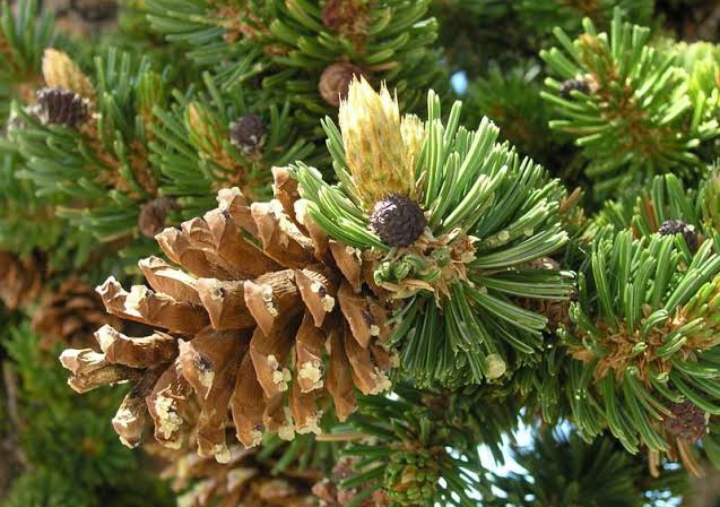
Scientific Name: Pinus balfouriana
Size: This tree reaches between 30 and 60 feet tall in its native environment.
Characteristics: This is a rare species but its commonly found in California. It is a medium-sized pine with a spreading irregular ghrown. The bark is gray or cinnamon in color with irregular deep-fissured scaly plates.
Italian Stone Pine
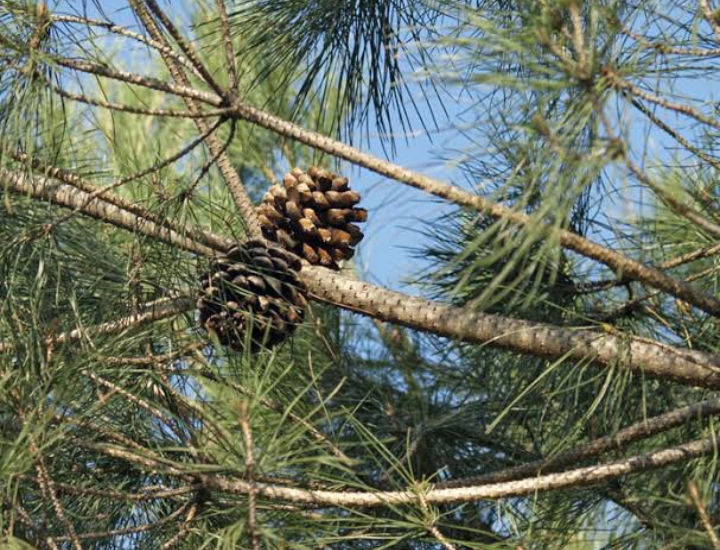
Scientific Name: Pinus pinea
Other Names: Umbrella Pine or Parasol Pine
Size: Grows between 60 and 85 feet in height, although their growth rate varies according to age and growing conditions.
Characteristics: This Mediterranean pine tree features a large size, umbrella-shaped canopy that give it a distinct look from other pines. The bark is thick, red-brown and deeply fissured into broad vertical plates.
Although this tree develops lower branches, they are usually shaded out as the crown matures. The pine tolerates many growing conditions including drought, sea spray and salt in the soil.
Also Read: Palm Trees
Lacebark Pine
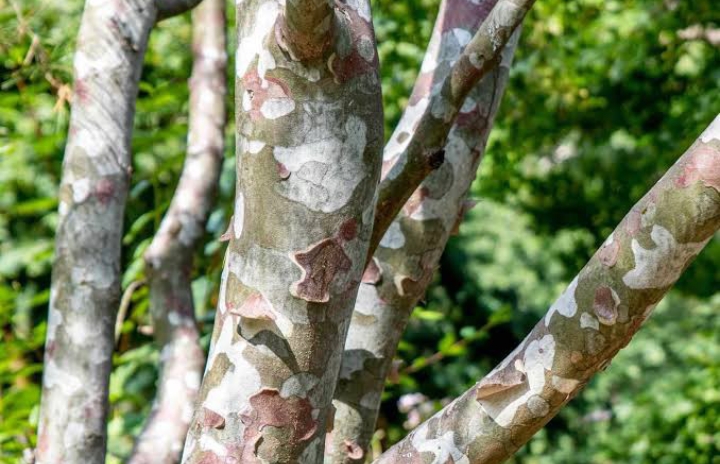
Scientific Name: Pinus bungeana
Size: This tree grows 30 to 70 feet tall depending with age and growing conditions.
Characteristics: Lacebark pine features a multi-stemmed, pyramidal to rounded crown that eventually becomes flat-topped with age. Its mottled bark which flakes in purple, brown red or creamy white, sets it apart from other pine species and is particularly attractive in winter. The bark eventually becomes silvery white at maturity.
Luchu Pine
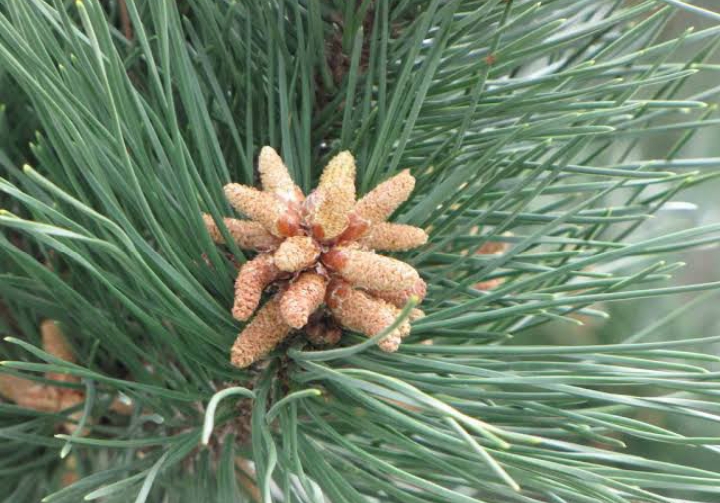
Scientific Name: Pinus luchuensis
Other Names: Okinawa Pine, Ryuku Island pine or Old-style pine
Size: This is a small to medium sized pine, growing between 12 to 60 feet tall.
Characteristics: This pine is characterized by flat-topped, open crown with numerous, slender, upwardly angled branches, heavily featuring foliage at the tips. Bark is gray and flakes with grayish black and eventually breaking into irregular plates.
Red Pine

Scientific Name: Pinus resinosa
Size: This tree is capable of growing beyond 90 feet tall.
Characteristics: Red pine is a medium-sized tree with a single straight, round trunk and a narrowly rounded crown of ascending branches. Red pine forms reddish-gray to reddish-orange furrowed and cross-checkered into irregular rectangular scaly plates.
Bhutan Pine
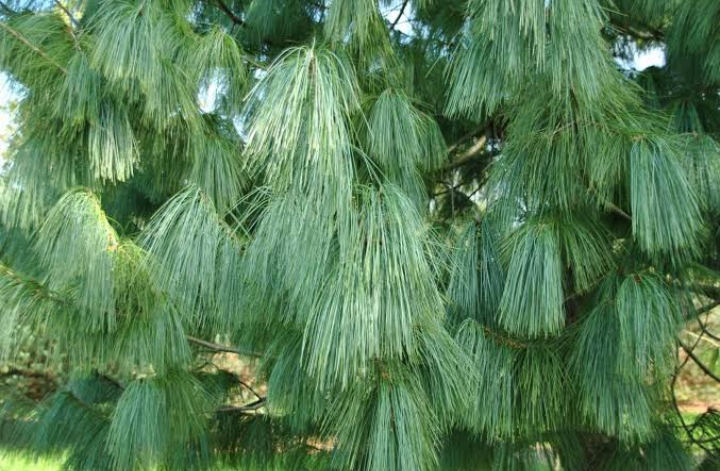
Scientific Name: Pinus Wallichiana
Native Area: Himalayan
Size: This pine grows between 25 and 60 feet in height.
Characteristics: Bhutan pine is a beautiful pine featuring an upright trunk, broad pyramidal crown with wide-spreading and pendulous branches. Mature trees usually retain their lower branches.
The gray-green bark is smooth, turning dark-grey and fissured in scales at maturity. This pine is a recipient of the prestigious Award of Garden Merit of Horticultural Society.
Gray Pine

Scientific Name: Pinus sabiniana
Other Names: Digger pine, Foothill pine, California foothill pine
Size: Gray pine typically grows between 25 and 65 feet in height at maturity.
Characteristics: Gray pine is a relatively medium-sized pine with a conical shaped, sparse crown. The bark is dark brown to nearly black in color and is irregularly and deeply furrowed with irregularly scaly plates that often break away.
A few feet off the ground, gray pines develop two or more twisted stems that can grow at irregular angles to one another. Gray pine is a long living pine suitable for planting on dry rocky soil that other trees cannot tolerate.
Also Read: Trees With Purple Flowers
Bishop Pine
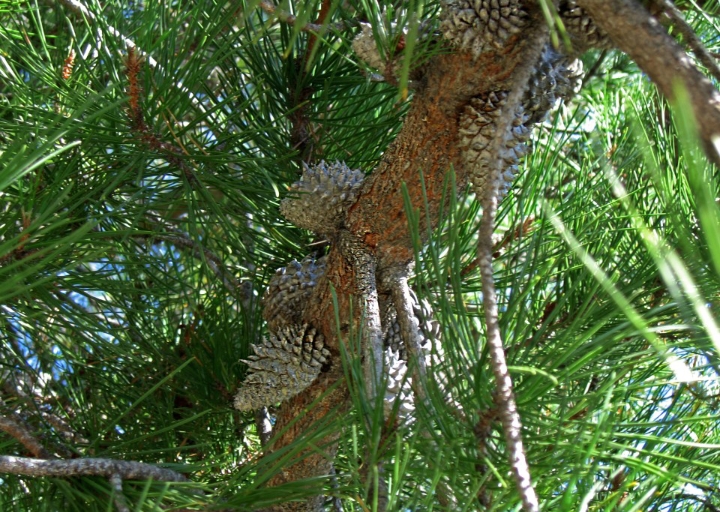
Scientific Name: Pinus muricata
Native Area: Califonia
Other Names: Bishop cone pine, Pricklecone, Obispo pine
Size: This tree is generally reach between 25 and 65 feet in height.
Characteristics: Bishop pines are highly variable in shape and size, from twisted to straight and dwarf to tall. The trees feature a straight to contorted to rounded crown with upward pointing branches. The bark is dark-gray, deeply furrowed and scaly plated. The trees are drought-tolerant and grows well on dry, rocky soils.
Pitch Pine
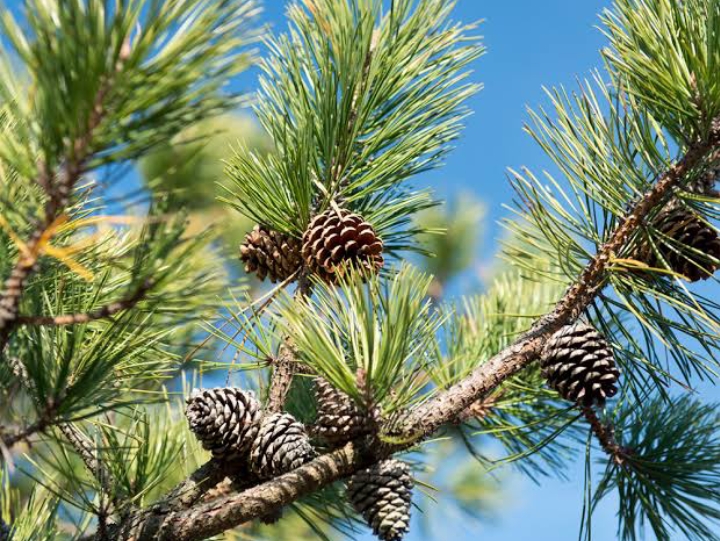
Scientific Name: Pitch pine
Native Area: North America
Size: It grows between 20 and 100 feet at maturity, depending with the environment on which it’s been grown.
Characteristics: Pitch pine is a rapid growing pine featuring a ragged or rounded crown. Branches are usually twisted whereas the trunk is usually straight and covered with thick scaly plates of bark.
Its yellow-green needles eventually turn dark-green at maturity. Pitch pine is exceptional among all pine trees due to its regenerative ability; if the main trunk is cut or damaged by fire, it can re-sprout using epicormic shoots.